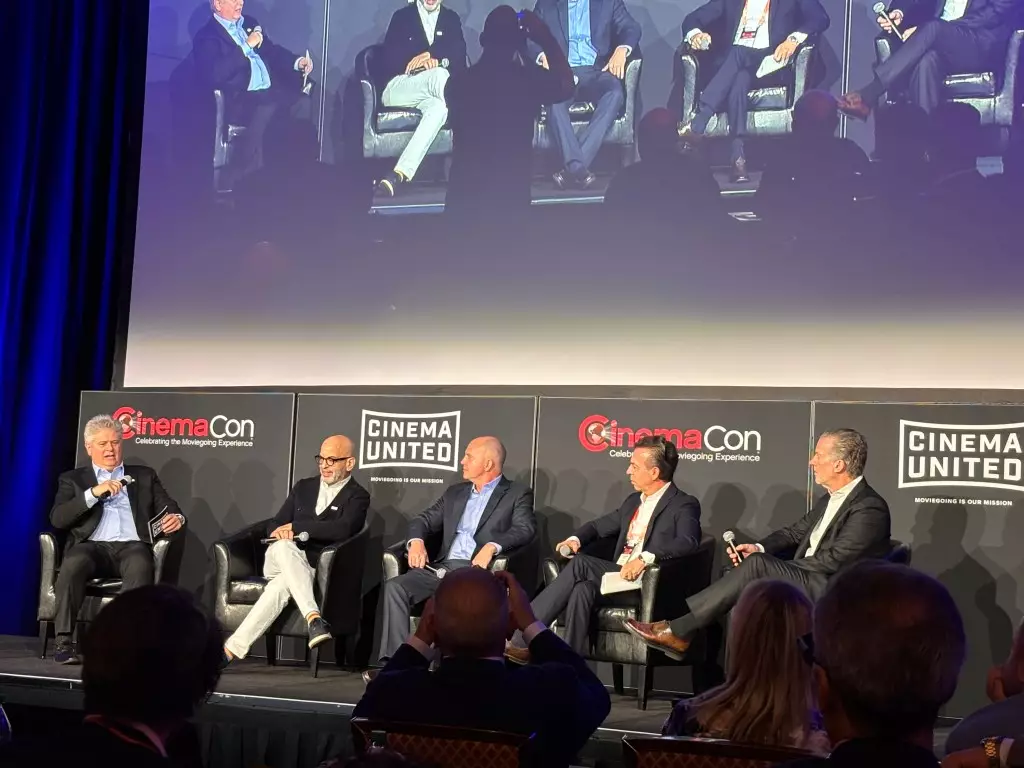In an era when blockbuster films can be churned out with a click of a button, one might assume the path to commercial success in Hollywood is paved with gold. Yet, industry insiders like Jeff Goldstein, president of Global Distribution for Warner Bros. Pictures, shed light on a sobering reality: movie-making has never been more expensive, nor its economic machinations more convoluted. As technology accelerates the dissemination of opinions and reviews to audiences worldwide within moments, the cost to reach and engage viewers has skyrocketed. The result? A precarious landscape where studios find themselves increasingly struggling to justify the enormous budgets often weighed against flimsy returns.
In Goldstein’s candid remarks, he highlights a significant question facing legacy studios: “What’s that value proposition?” This inquiry strikes at the heart of modern filmmaking—how can legacy studios maintain financial viability while grappling with an audience that seems both fragmented and fickle? The sheer absurdity of pouring vast amounts of money into productions only to face uncertainty at the box office is disheartening, revealing the cracks in an industry previously defined by its ability to innovate and entertain.
The Disconnect Between Production and Audience
At CinemaCon, a gathering where the industry’s most influential figures gathered, a prevailing sentiment emerged: the traditional methods of marketing films are in dire need of rethinking. The success formula that worked reliably in the past has been shattered by the onslaught of social media and online discourse. Goldstein’s observation that “the dollars we spend are, in many cases, much greater than we’ve ever spent before, but the effectiveness is much less” epitomizes the disconnection between what studios invest and what they ultimately receive in return.
Studios often find themselves shooting in the dark, initiating marketing campaigns that appear to resonate one month but fail utterly the next. It’s a precarious balancing act, and one misstep can cause a marketing plan to spiral into an unmanageable failure. This position should not surprise us; in a world where films can be critiqued within seconds of their screenings, gauging audience sentiment has become not only a challenge but a near-impossible endeavor.
The Burgeoning Risk of Content Overload
The continuing fragmentation of the audience poses a unique dilemma: how can studios attract varied demographics with so much competing content? Viane from Paramount Pictures encapsulated this sentiment well, pointing out that “to hit so many bullseyes,” is to navigate a maze of market dynamics that are evolving constantly. The film industry is increasingly facing the perilous situation encapsulated by ‘content overload,’ where viewers are bombarded with choices and information to such an extent that they experience decision fatigue.
In circumstances like these, the clearest narrative rarely ascends to the top; the process becomes more chaotic, with audiences gravitating toward sensationalism rather than artistic expression. The irony is palpable: as information spreads like wildfire, creative content risks being suffocated in the very platform that should elevate it.
The Challenge of Cinematic Experience
The experience of attending the cinema has traditionally been a unifying social activity, but industry leaders like Viane have raised pressing concerns that this experience is rapidly degrading. With the competition intensifying from home streaming options, the unique charm of the cinematic environment must evoke emotional engagement to ensure loyal patronage. When a customer leaves a theater feeling manipulated by pre-show advertisements or unreasonably long waits, the likelihood they will return swiftly diminishes.
Cinema today is about more than just the film on the screen; it encapsulates the ambiance and emotional investment associated with the experience itself. If the theater does not provide an environment that respects the viewer’s time and sense of enjoyment, it risks alienating its audience entirely.
The challenge is not just a marketing one; it extends to the very essence of what leads people to choose a night in the theater over their cozy couch with a streaming service. As the industry flounders under the weight of these pressures, the question must be asked—what will it take for Hollywood to rediscover its magic? This is not merely a financial challenge; it is a profound existential crisis at the heart of an industry that has shaped culture globally for over a century.

